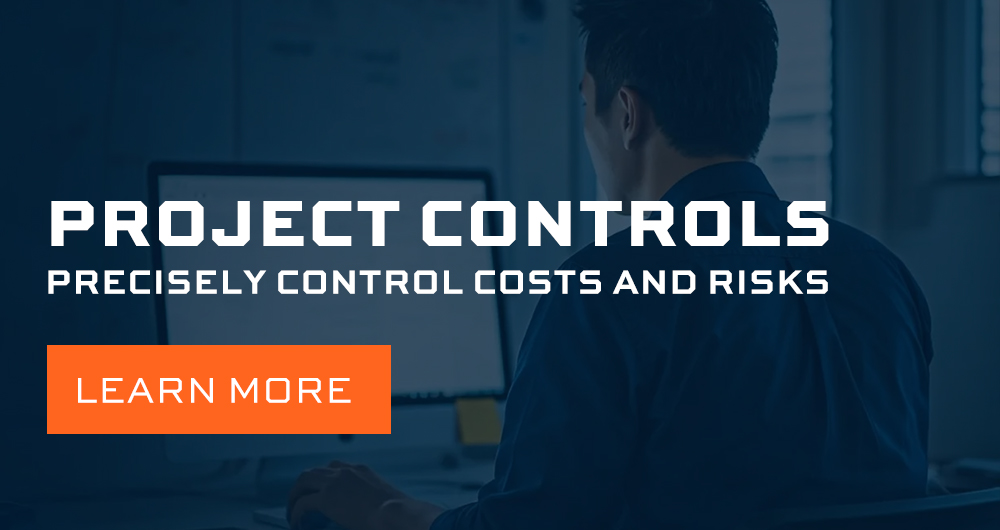Risk isn’t the easiest topic to talk about and can seem perhaps even less so in a workshop setting. These workshops are meant to surface the risks that can impact a project’s schedule, cost and productivity and to make decisions on how to best mitigate them. But they can also have the unintended effect of being too academic and complex, even a bit intimidating when looking at risk analysis statistics.
In truth, they’re about far more than simply numbers. When you think about the end product of risk assessments, the resulting management is really about reaching a certain level of confidence in the plan you’re creating. So, let’s reframe the purpose of risk management workshops as being about confidence management. Because it’s that confidence that strengthens buy-in of the resulting risk-adjusted plan among everyone from owners and contractors to design engineers and project managers.
How can you use risk management workshops to build confidence?
Let historical data start the conversation
It’s said that history is our best teacher. So, first look at what you can learn from similar projects that you can apply to planning for a new project. What risks occurred — both the anticipated and the unexpected — that you should include in your risk analysis? How were they managed and mitigated? How did they affect the schedules? How did the performance metrics evolve in response to those risks? What could have been done differently that might have lessened their impact on the projects and on the metrics? Also consider how likely these risks are to occur again and what degree of control you have over them.
The answers that surface during the workshop will help establish a baseline for a realistic plan that relies on risk management as a key planning factor.
Leverage software to help drive certainty via risk management
While certainty isn’t synonymous with guarantee, what software with risk analysis and forecasting capabilities can deliver is improved decision-making based on objective data — and also more control over the planning process. You’ll be able to see this in action by putting it to use during the risk management workshop.
Start by importing your past project data as the groundwork for a new plan and adjust as necessary for the current project’s scope. To get an idea of the degree to which identified risks can impact cost and schedule through the project’s duration, you could enter risk variables into the software to create what-if scenarios. They can be ones that occurred during those past projects as well as new ones. The resulting effects on budget and timeline will automatically adjust in real time as you experiment with changes to the variables. For example, what do the numbers tell you about the risk exposure? What is the evolving risk-adjusted schedule showing? What degree of certainty in plan achievability is the team comfortable with: 75, 85 or perhaps 90%? This can help determine if a project is feasible and worth the investment and risk of taking on.
Take into account the human experience around risk management
Project plans and risk management aren’t all about data. They’re also about the human experience, knowledge and collaboration.
Look around at the experience sitting right in the risk management workshop — their specific roles within the project, the different disciplines or functions they represent, and their unique insights and perspectives gained on the job. Each will have a unique take on what the work entails, the human impact of various risk factors, and the proposed solutions and preventive measures that have been effective — and those that have not.
While having a data-backed, risk-adjusted plan may improve the likelihood of buy-in, it also serves as a basis for collaborative discussion, analysis and decision making around that plan. For example, does the plan seem achievable? Has anything been overlooked? What contingency plans can be created to mitigate acknowledged potential risks?
Take advantage of today’s virtual risk management workshops
When the pandemic forced construction companies to pivot in how they managed projects from afar, they also had to shift in how they managed risks. Construction software came to the rescue, and its adoption has continued to rise across the industry. The software also made it possible to conduct risk management workshops virtually. It’s not only safer, but also more convenient for stakeholders and can be conducted in a shorter time. In addition, where the in-person variety hasn’t always been conducive to running real-time risk-analysis calculations and schedule adjustments based on participant inputs, such activities and results are now possible with virtual workshops.
These online workshops are also helping to equalize the opinions and experience of everyone in the room. This may also be having the interesting effect of lifting confidence within the construction team as they can now see how their input becomes part of the overall risk-adjusted plan being developed.
The software you use can make all the difference in what you can accomplish in your risk management workshops and in the level of project certainty you can achieve. If you’re exploring your options, a robust construction software like InEight Schedule can ensure you’re able to consider potential risks and create contingency plans to keep up project momentum. Find out how it can help you create a risk-adjusted schedule by scheduling a demo.




